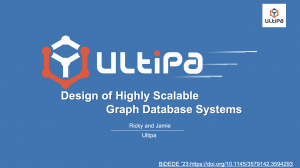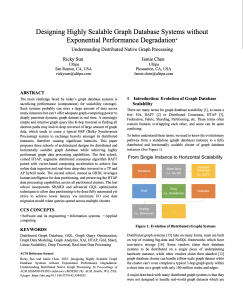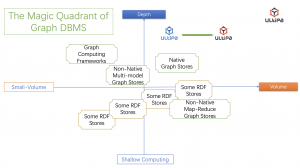Ultipa presents technical paper over ACM SIGMOD 2023 on Scalable Graph Database system design
Leading graph database builder Ultipa presents paper on highly scalable graph database system architecture design with 3 architectures: HTAP, Grid and Shard.
PLEASANTON, CALIFORNIA, USA, June 20, 2023/EINPresswire.com/ --
The ACM SIGMOD 23' conference is held in Seattle/Bellevue this week (June 18-23).
Ultipa, the industry leading and next-generation Graph XAI & Database player and builder, presents the latest paper titled over the conference:
Designing of Highly Scalable Graph Systems without Exponential Performance Degradation -- Understanding Distributed Native Graph Processing
The paper proposes 3 schools of architectural designs, all of which have been deployed with large enterprise customers, particularly in the BFSI industries, and proven (to be effective and solid in addressing customer painpoints) based on many years of industrial applications and integrations with existing big-data and IT infra. systems.
The 3 schools of system architecture designs are:
1. HTAP
2. Grid
3. Shard
The main challenge faced by today’s graph database systems is sacrificing performance (computation) for scalability (storage). Such systems probably can store a large amount of data across many instances but can’t offer adequate graph-computing power to deeply penetrate dynamic graph dataset in real time. A seemingly simple and intuitive graph query like K-hop traversal or finding all shortest paths may lead to deep traversal of large amount of graph data, which tends to cause a typical BSP (Bulky Synchronous Processing) system to exchange heavily amongst its distributed instances, therefore causing significant latencies.
This paper proposes three schools of architectural designs for distributed and horizontally scalable graph database while achieving highly performant graph data processing capabilities.
1. The first school, coined HTAP, augments distributed consensus algorithm RAFT paired with vector-based computing acceleration to achieve fast online data ingestion and real-time deep-data traversal in a TP and AP hybrid mode.
2. The second school, named as GRID, leverages human-intelligence for data partitioning, and preserving the HTAP data processing capabilities across all partitioned clusters.
3. The last school incorporates SHARD and advanced GQL optimization techniques to allow data partitioning to be done fully automated yet strive to achieve lower latency via minimum I/O cost data migration model when queries spread across multiple clusters.
There will be another sharing over LDBC TUC meeting , colocated with SIGMOD conference, on June 23. #ACM #Ultipa_Graph #graphdatabase
Richard C.
Ultipa
join@ultipa.com
Visit us on social media:
Facebook
Twitter
LinkedIn
YouTube
Legal Disclaimer:
EIN Presswire provides this news content "as is" without warranty of any kind. We do not accept any responsibility or liability for the accuracy, content, images, videos, licenses, completeness, legality, or reliability of the information contained in this article. If you have any complaints or copyright issues related to this article, kindly contact the author above.



